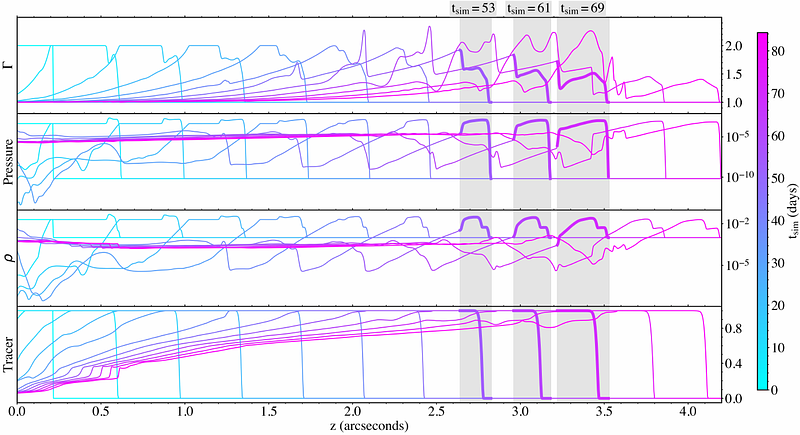Relativistic ejecta from stellar mass black holes: insights from simulations and synthetic radio images

Relativistic ejecta from stellar mass black holes: insights from simulations and synthetic radio images
Katie Savard, James H. Matthews, Rob Fender, Ian Heywood
AbstractWe present numerical simulations of discrete relativistic ejecta from an X-ray binary (XRB) with initial conditions directly informed by observations. XRBs have been observed to launch powerful discrete plasma ejecta during state transitions, which can propagate up to parsec distances. Understanding these ejection events unveils new understanding of jet-launching, jet power, and jet-ISM interaction among other implications. Multi-frequency quasi-simultaneous radio observations of ejecta from the black hole XRB MAXI J1820+070 produced both size and calorimetry constraints, which we use as initial conditions of a relativistic hydrodynamic simulation. We qualitatively reproduce the observed deceleration of the ejecta in a homogeneous interstellar medium (ISM). Our simulations demonstrate that the ejecta must be denser than the ISM, the ISM be significantly low-density, and the launch be extremely powerful, in order to propagate to the observed distances. The blob propagates and clears out a high-pressure low-density cavity in its wake, providing an explanation for this pre-existing low-density environment, as well as 'bubble-like' environments in the vicinity of XRBs inferred from other studies. As the blob decelerates, we observe the onset of instabilities and a long-lived reverse shock -- these mechanisms convert kinetic to internal energy in the blob, responsible for in-situ particle acceleration. We transform the outputs of our simulation into pseudo-radio images, incorporating the u,v coverage of the MeerKAT and e-MERLIN telescopes from the original observations with real-sky background. Through this, we maximize the interpretability of the results and provide direct comparison to current data, as well as provide prediction capabilities.